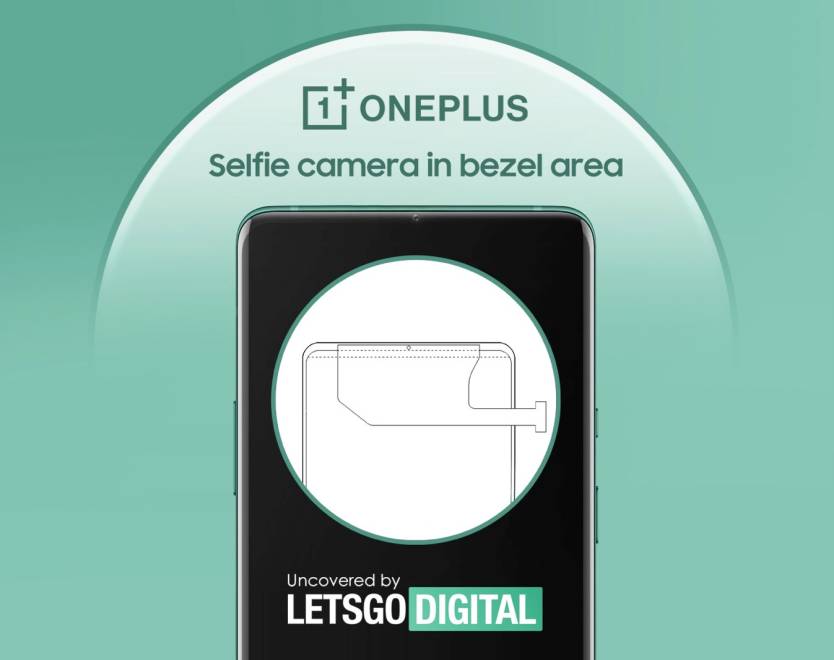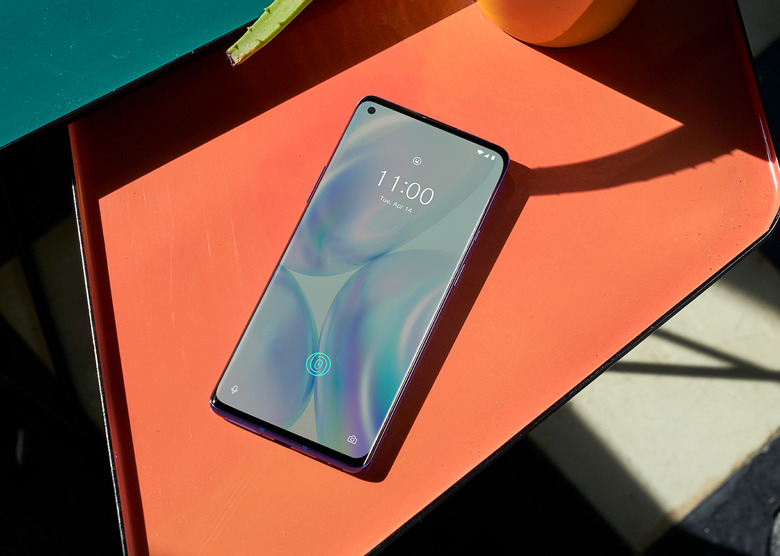OnePlus Has A New Idea For The Perfect All-Screen Phone Design
- The OnePlus 9 is the next flagship phone from OnePlus, but the Chinese smartphone vendor is also working on innovations that might take longer to hit the market.
- A new patent discovery shows that OnePlus wants to create a perfect all-screen smartphone with a front-facing selfie camera.
- The selfie cam would not sit under the display, a direction others in the industry are pursuing, but in the thin bezels at the top of the phone.
It's 2021, but the perfect all-screen phone design remains elusive. We currently have two design options available to smartphone makers, one for each ecosystem. Most iPhones get notches at the top, including an array of cameras and sensors that are needed to power Face ID. The handsets have small bezels around the screen except for the notch area. The iPhone 13 will supposedly feature a smaller notch than before. After trying all sorts of alternatives to the notch, Android vendors stuck with the hole-punch display design that Samsung has been using on its smartphones for three years now. Most Androids don't have 3D face recognition, but some people like a tiny selfie camera hole better than the iPhone notch.
The ultimate dream is to do away with the bezel and place the selfie cameras and sensors under the display. Several companies have been working on under-display cameras, but we only have one commercial device featuring such a screen, an uninspiring ZTE mid-range handset. Under-screen cameras might come to laptops using Samsung OLED screens before smartphones, but that's not the only option to create a perfect all-screen smartphone and keep the selfie camera on the front. OnePlus has come up with a different idea.
While Samsung was readying its hole-punch displays, others in the industry came up with unusual designs to maximize the screen-to-body ratio. The most straightforward idea was to have the camera pop-up from inside the phone, which is what OnePlus did. Another option was placing a secondary display on the back. The primary camera would act as a selfie camera when selfies were needed. We also saw swiveling mechanisms that rotated the rear cameras towards the front. They're all capable of delivering a bezel-free display, but they're also compromises that remove the camera from the front side of the phone.
Dutch-language blog LetsGoDigital is quick to discover new patents from smartphone makers filed in international markets, and the latest involves OnePlus. The Chinese handset maker is working on technology that would allow it to place a tiny camera in the small bezel region that sits at the top of the screen. Ironically, the camera would return to the bezel of the phone or the area where the camera used to reside before all-screen phones were in vogue.

An illustration shows the bezel selfie camera tech based on a OnePlus patent.
However, this isn't a standard camera that you would have seen on a phone predating the iPhone X. The selfie camera in this illustration, based on images from a OnePlus patent filed with the World Intellectual Property Office (WIPO), has a much smaller diameter. The camera would sit right in the middle of the top bezel, which would also be very thin.
The OnePlus 9 is still expected to feature a hole-punch display, just like the 2020 OnePlus flagships.
It's unclear whether the bezel camera's size would impact the quality of the selfies in any way. After all, the rear camera bump is still present on phones after all these years for a reason. Smartphone vendors have not reduced the thickness of cameras, which incorporate lenses with several elements. Selfie cameras do not have to be as sophisticated, but smartphone makers have upgraded selfie photography alongside principal camera photography.
Such a bezel camera would allow OnePlus to offer buyers a phone with a full-screen display with no notches or camera holes. And the selfie cam would still sit on the front where it belongs.
As with any technology detailed in patents, there's no assurance that OnePlus will pursue this particular technological advancement. Even if OnePlus does, it's unclear when it would be available. The OnePlus 9 should launch in the coming weeks, at which point we'll know more about the Chinese company's camera plans.
